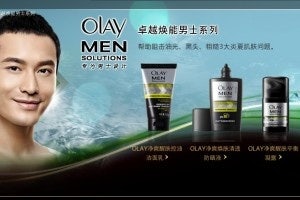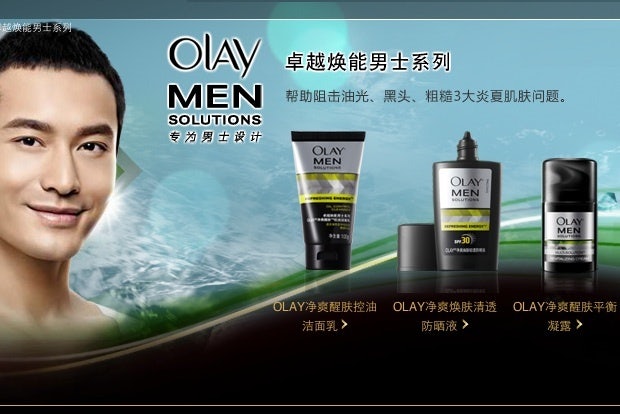China's Male Skincare Market Worth Nearly US$1 Billion In Retail Sales#

Back in 2010, Jing Daily profiled the rise of the "he fashion" (他时尚) trend in China, characterized by a new focus on personal style, skincare and label consciousness among male consumers. Speaking at that time on the rise of China's urban, relatively wealthy male consumer, Kunal Sinha of Ogilvy & Mather Shanghai said, "The male Chinese market is huge and it’s an untapped wealth. The key driver here is not only that they want to look good and have the money to splurge but it’s also to express their masculinity." This may sound counter-intuitive when we're talking about moisturizer, but with China's middle class men now "developing their own comprehensive style based on individuality," according to a Xinmin article, over the last couple of years brands have finally jumped on the male bandwagon in a big way.
As AdAge writes this week, China's male skincare market, which is now worth around US$1 billion annually in retail sales, has enticed major global players to introduce or expand male lines in the country. Along with long-time leaders like Biotherm, men in China now can choose from products by Procter & Gamble's's Olay Men Solutions, L'Oreal Men Expert, Nivea for Men and Mentholatum, all of which are priced in the the lucrative premium segment. As Alexander Dony, Procter & Gamble's's managing director for male-grooming brands (Greater China) told Thoughtful China, one of the distinguishing factors of Chinese male consumers is a propensity to start at the highest-end of the market before working their way "down." Said Dony, "Common brands of entry include Chanel and Dior, which is obviously very different from Western markets, where consumers start with a lower entry brand and work up."
A key driver for this level of premium consumption is professional and peer pressure, a desire to connote prestige, and -- due to China's gender imbalance -- romantic competition. Peripheral drivers such as these are also pushing sales of other luxury categories, such as wine and spirits, watches, and automobiles. As AdAge notes,
Most consumers buying luxury goods in China are men. Chinese men spent $1.1 billion on their wardrobes in 2010, dwarfing the $444 million that women spent, according to a recent Bain report. The market for luxury menswear was expected to rise 9% last year, vs. 7% for women's wear (final figures are not yet in).
Marketers should beware that "aspirational" and "premium" are overused words and that their meaning varies dramatically throughout China, said Rob Campbell, regional head of strategy at Wieden & Kennedy, Shanghai, Nike's's agency in China. "Marketers need to understand the conflicted optimism that's going on."
In another misconception, Western marketers often view Chinese men as passive, said Lawrence Law, brand director-engagement marketing for Moet Hennessy Diageo's's Johnnie Walker brand in China. "There is this hunger and motivation to learn about new things. If you do [branding] right and consistently, consumers will share the story with others."
